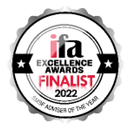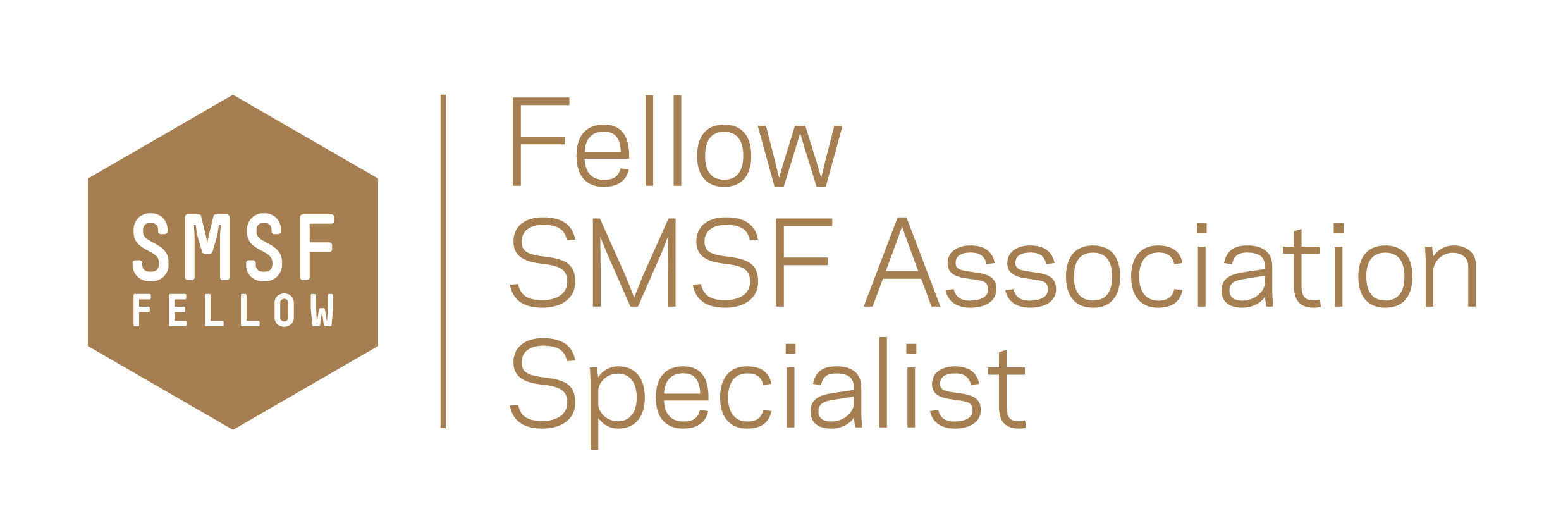The latest ASIC REPORT 337: SMSFs: Improving the quality of advice given to investors includes a useful checklist for those dealing with SMSF advice to the normal person in the street or in technical terms “retail clients”. It also includes some useful examples. Here is the Checklist and I would suggest all those including Licensed Accountants, Financial Planners, Lawyers, Mortgage Brokers, Property Developers and Share Brokers be prepared to ensure your clients have considered all 32 issues raised or you leave yourself open for scrutiny and litigation if you have been involved in the recommendation of the structure.
Have you considered a SMSF and sought advice? Did your “adviser” mention these issues?
Appendix: Tips for advice providers
Table 6: Some tips for advice providers giving advice to retail clients on SMSFs
Issue: Role and obligations of SMSF trustees
What you should do or consider
C1 The ATO regulates SMSFs and provides a number of useful publications on its website about the obligations and duties of trustees in managing an SMSF. As good practice, you should:
(a) direct investors to the relevant pages on the ATO website; or
(b) provide investors with a copy of key ATO publications with their SOA to ensure investors understand their obligations.
C2 You should explain to investors that, by law, each trustee has duties and obligations to:
(a) act honestly in all matters concerning the SMSF;
(b) exercise skill, care and diligence in managing the SMSF;
(c) act in the best interests of all SMSF members;
(d) take appropriate action to protect SMSF assets and manage them separately from the trustee’s own affairs;
(e) comply with the SMSF trust deed and review and update it as required;
(f) be responsible for and control the SMSF, even where the trustees outsource the required expertise or one trustee is more actively involved in the day-to-day running of the SMSF;
(g) have a documented investment strategy that considers all the circumstances of the fund, and review and update the investment strategy as the members’ financial situation, needs and objectives require;
(h) consider insurance for fund members as part of the fund’s investment strategy;
(i) understand which investments are restricted and that SMSF investments must be made solely to pay retirement benefits to members or the members’ dependants if a member dies;
(j) accept and document contributions in accordance with the superannuation laws;
(k) ensure the SMSF’s money is invested appropriately (even if the trustee outsources the investment to an advice provider);
(l) keep proper and accurate tax and superannuation records (e.g. minutes of all investment decisions) and allow members to have access to such information and records;
(m) comply with the superannuation and tax laws (and the Corporations Act for corporate trustees);
(n) value the fund’s assets at market value for the purposes of preparing financial accounts and statements;
(o) have the SMSF audited annually by an independently approved auditor;
(p) comply with the reporting obligations to the ATO (e.g. report contributions from members, lodge annual returns, report on any changes to trustees, directors or members of the SMSF; lodge a business activity statement if the SMSF is registered for Goods and Services Tax (GST));
(q) pay the supervisory levy and the SMSF’s income tax liability when due;
(r) refrain from entering into contracts or behaving in a way that hinders trustees from performing or exercising functions or powers;
(s) refrain from entering into transactions that circumvent restrictions on the payment of benefits; and
(t) ensure that the money in the SMSF is only accessed by members when the trust deed and law allow it.
C3 You should explain to investors that, within 21 days of becoming an SMSF trustee, they will need to complete the ATO’s trustee declaration.
C4 You should walk investors through the ATO’s trustee declaration, explain each obligation and duty, and allow investors to ask any questions about their obligations.
C5 If you do not adequately understand the role and obligations of SMSF trustees, it is inappropriate for you to advise investors about SMSFs.
ISSUE: Suitability of an SMSF structure
What you should do or consider
C6 You should discuss the investor’s fund balance size and whether it is likely to be cost-effective for the investor to set up an SMSF. Cost is just one factor to consider and does not mean by itself that an SMSF will be appropriate or inappropriate for the investor.
C7 You should discuss the likely costs associated with running an SMSF, including the costs of establishment, ongoing investment management, compliance and advice,
and explain these costs to the investor before making a recommendation to establish an SMSF.
C8 Before recommending an SMSF, you should consider the investor’s ability and
willingness to manage the fund and meet their trustee obligations on an ongoing basis.
C9 Be aware of ‘red flag’ indicators that may suggest an SMSF will not be suitable for an investor, including, but not limited to:
(a) a low fund balance where the members have a limited ability to make future contributions;
(b) the investor wants a simple, low-touch superannuation solution;
(c) the investor wants to delegate decision-making to someone else;
(d) the investor does not have a lot of time to devote to managing their financial affairs;
(e) the investor has little investment decision-making experience;
(f) the investor, or suggested trustee, is an undischarged bankrupt or has been convicted of an offence involving dishonesty (as such, persons are prohibited from acting as a trustee); and
(g) the investor has a low level of financial literacy.
C10 You should explain to investors approaching the pension phase that there may be a point at which the SMSF may cease to be cost-effective because fixed costs will remain constant or increase while the balance of the fund diminishes.
C11 Where appropriate, you should discuss SMSF succession planning issues with investors (this will be more relevant for older investors). Some key questions to discuss include:
(a) For investors who are individual trustees, what will happen if one of the trustees dies?
(b) If one trustee (the controlling trustee) is more actively involved in the day-to-day management of the SMSF, what will the less active trustee do if the controlling trustee is unable to manage the SMSF?
ISSUE: Risks of an SMSF structure
What you should do or consider
C12 You should warn investors looking to set up an SMSF about the lack of Government compensation available to SMSFs. This information will help investors properly weigh up whether an SMSF structure is right for them.
C13 You should warn investors that SMSF trustees and members do not have access to the Superannuation Complaints Tribunal (SCT) to resolve complaints.
C14 You should explain the advantages and disadvantages of establishing an SMSF with a corporate trustee versus individual trustees, and provide investors with relevant ATO publications via hard copy or web-links.
C15 If the investor’s proposed membership structure of an SMSF is unusual, you may need to spend more time discussing the duties and obligations of trustees, the risks associated with the membership structure, and the importance of having a well documented, specific investment strategy and a trust deed that contains dispute resolution clauses.
C16 You should reiterate the role and responsibilities of trustees, and explain that, even if one trustee is less actively involved, they are equally liable for the SMSF’s compliance with the superannuation and tax laws.
C17 When you recommend an SMSF to an investor, you will need to discuss their insurance needs. This will often involve discussing:
(a) their existing insurance coverage;
(b) the level of insurance coverage they will need in future;
(c) the cost and options for maintaining, increasing or decreasing (as appropriate)
their existing insurance coverage through an SMSF;
(d) whether the investor has any health issues that may affect their ability to get
insurance coverage;
(e) the advantages and disadvantages of retaining a portion of their APRA- regulated superannuation for insurance purposes (if considered appropriate); and
(f) the impact of the insurance recommendation on the investor’s SMSF balance.
C18 If you identify an investor needs advice on insurance, you must consider and advise the investor on their insurance needs before recommending an SMSF be established. If you do not have the necessary expertise to provide insurance advice, you should notify the investor and refer the investor to an advice provider who has the expertise to provide the advice.
Issue Investment strategy
What you should do or consider
C19 You should explain to investors the sole purpose test and the requirement for investments to be made and maintained on an arm’s length basis.
C20 When you are advising investors on their SMSF investment strategy, you should explain the benefits of asset diversification and investing across a number of asset classes (e.g. shares, real property and fixed interest products) in a long-term investment strategy.
C21 You should explain to investors that some investments are restricted and that it is the trustee’s obligation to ensure that the SMSF does not make restricted Investments: see tip C2(i).
C22 You should explain to trustees that they are required to regularly review the fund’s documented investment strategy to ensure that it suits the needs of fund members.
C23 If you are recommending that an SMSF be established to invest in a single asset, you should ensure that the SOA adequately documents the basis for the advice in
light of the investor’s financial situation, needs and objectives. In particular, you should set out why the investment is appropriate, rather than a diversified investment portfolio, and whether the investment will generate a sufficient return to fund the investor’s retirement needs and, if not, what the exit strategy is and any costs or risks associated with this exit strategy.
C24 You should explain to investors that the SMSF investment strategy is likely to change as members approach the retirement phase and their needs and circumstances change.
C25 If an investor has a preference towards a real property investment, you should consider whether the real property investment is appropriate.
C26 If you are recommending a real property investment, you should discuss with the investor:
(a) the needs and circumstances of the fund members (e.g. their age and retirement needs);
(b) if the recommendation involves an investment loan, how long it will take for the investor to repay the loan;
(c) the investor’s ability to repay the loan if an unexpected event occurs (e.g. the investor becomes unemployed for a period);
(d) how the investor’s retirement will be funded by the real property investment (i.e. through the sale of property or through rental income);
(e) how likely the property can be sold quickly (i.e. whether it is in a high-demand area); and
(f) what the investor will do if the property is not rented for a period.
Note: If the investment property is not the SMSF’s sole asset, you may need to spend less time discussing the above issues.
Issue: Switching from an APRA-regulated superannuation fund
What you should do or consider
C27 When recommending an SMSF, you will need to explain the charges and significant consequences the investor will, or may, incur as a result of changing (fully or partially) from an APRA-regulated fund to an SMSF.
C28 When discussing the consequences of a switch, you will need to use language and concepts that the investor will understand.
C29 If you assess an investor has a low level of financial literacy; an SMSF will not be an appropriate retirement savings vehicle for the investor.
Issue: Alternatives to an SMSF structure
What you should do or consider
C30 Before recommending an SMSF to an investor, you should consider whether an APRA-regulated fund will meet the financial situation, needs and objectives of the investor. Many APRA-regulated funds now offer a DIY investment option.
C31 APRA-regulated funds may be more cost-effective for investors than an SMSF, depending on the size of the investor’s superannuation balance, and the extent to which the SMSF trustee(s) would engage external professionals to undertake administrative and other functions.
C32 Setting up an SMSF, which then invests through an investment platform, may not be as cost-effective for investors as becoming a member of a public offer investment
Thoughts:
As a licensed Financial Planner and Accredited SMSF Specialist Advisor™ I can and do assess these 32 points with my clients and under my license I am required to put the recommendations in writing after considering and high lighting the above points.
There is therefore less chance of me recommending a SMSF to a person not suited to running one but if that should happen they may have recourse to my Professional Indemnity Insurance. However if they have received the advice to set up a SMSF from an unlicensed person then they may have no recourse to PI as that person’s cover would most likely exclude such claims.
As always please contact me if you want to look at your own options. We have offices in Castle Hill and Windsor but can meet clients anywhere in Sydney or online via Skype.
Liam Shorte B.Bus SSA™ AFP
Financial Planner & SMSF Specialist Advisor™





Tel: 02 98941844, Mobile: 0413 936 299
PO Box 6002 BHBC, Baulkham Hills NSW 2153
5/15 Terminus St. Castle Hill NSW 2154
Corporate Authorised Representative of Viridian Select Pty Ltd ABN 41 621 447 345, AFSL 51572
This information has been prepared without taking account of your objectives, financial situation or needs. Because of this you should, before acting on this information, consider its appropriateness, having regard to your objectives, financial situation and needs. This website provides an overview or summary only and it should not be considered a comprehensive statement on any matter or relied upon as such.

























